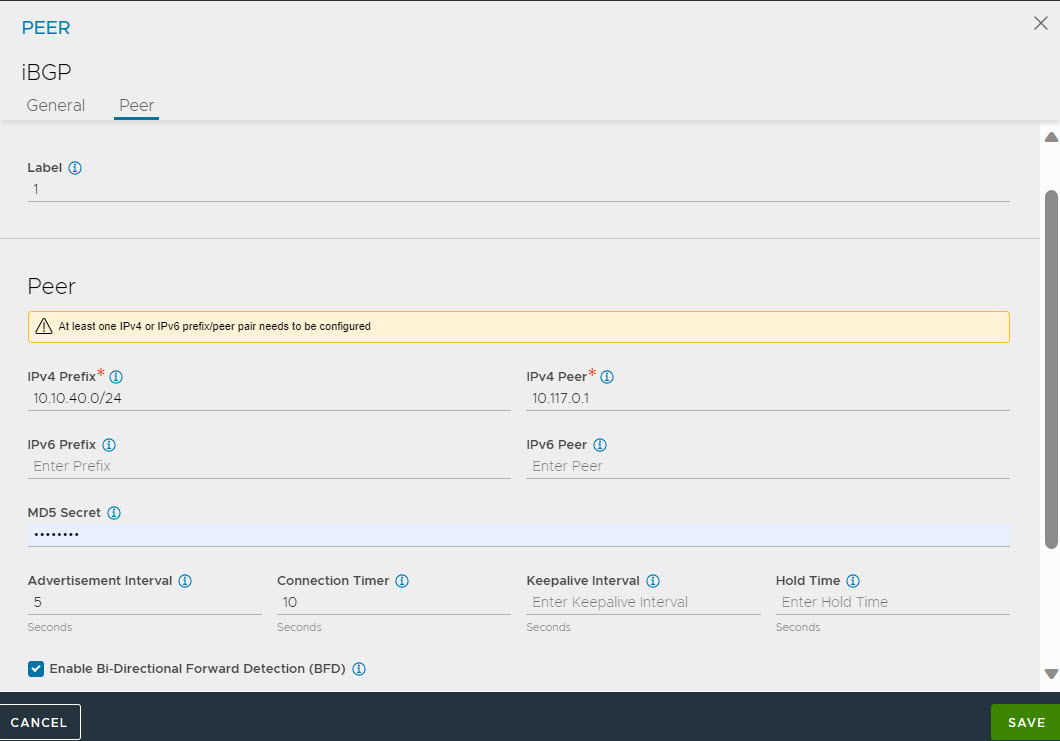For configuring IP routing without BGP peers, follow the five steps detailed above with the following exceptions:
If the front end supports BGP peering, then there is no necessity to configure floating IPs on the front end interface (skip step 1.d above).
Also, you do not have to configure static routes in the front-end router (skip step 3 above).
After performing the above steps, follow the instructions below:
Procedure
- Navigate to . Click Edit for an existing object.
- Navigate to the BGP Peering tab. Select the Enable BGP Peering check box. Enter the BGP Autonomous System (AS) ID. Click ADD under Peers.
On the NSX Advanced Load Balancer Controller, configure BGP Peers network and IP Address.
: > configure vrfcontext global
: vrfcontext> bgp_profile ibgp local_as 1
: vrfcontext:bgp_profile >
: vrfcontext:bgp_profile> peers peer_ip 10.10.40.3
New object being created
: vrfcontext:bgp_profile:peers>
: vrfcontext:bgp_profile:peers> subnet
IP4 Prefix Format
(required) Subnet providing reachability for ... : vrfcontext:bgp_profile:peers>
subnet 10.10.40.0/24 : vrfcontext:bgp_profile:peers>
bfd : vrfcontext:bgp_profile:peers>
save : vrfcontext:bgp_profile>
save : vrfcontext> save


Enter the details as shown above. Click SAVE.
- Configure the application profile to preserve client IPs for associated virtual service(s). This step is to be performed before any virtual service using the given application profile is enabled.
: > configure applicationprofile System-HTTP
: applicationprofile> preserve_client_ip
Overwriting the previously entered value for preserve_client_ip
: applicationprofile> save
This configuration will not succeed if enable_routing is not yet configured. This configuration works in mutual exclusion with the Connection Multiplexing option for L7 application profiles.
- Create a virtual service with an application profile for which preserve client IP is enabled.

